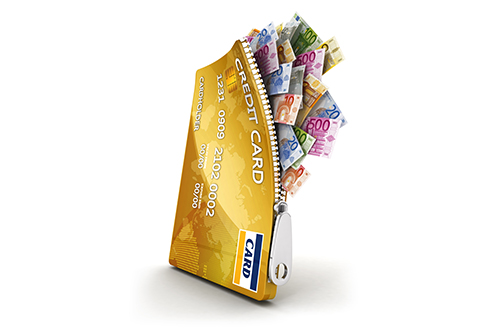E-wallets vs Net-banking vs credit cards

The demonetization of high currency notes by the government has led to a big surge in digital payments, with more and more people realizing the convenience that comes with it. As India progresses towards a cashless economy, we take a look at how different digital payment systems work and fare against each other:
Mobile wallet
Mobile Wallet is a virtual digital wallet where you can keep your money to use it when you need without swiping you debit/credit cards. From grocery items to flight tickets, everything can be purchased by using e-wallets. No minimum deposit amount is needed, and is one of the fastest mediums for a transaction.
The ewallets can be downloaded from your smartphone’s app store.
In order to use these mobile wallets, you need to have a smart phone with active internet connection. Fill up the basic details such as your name and mobile number for signing up for the wallet. Once you log into the e-wallet account, you can transfer money into it through your credit card, debit card or net banking. As per the current RBI notification, a maximum amount of Rs.20,000 can be put into the e-wallet.
Examples of mobile wallets: Paytm, MobiQuick, Airtel, Freecharge, Oxygen, PayU Money, Wallet, Chillr.
iv
Ideally used for: Utility Bills, Movie Tickets, Cab Rides
iv
Ideally used for: Utility Bills, Movie Tickets, Cab Rides
Mobile Banking
Nowdays, you can almost do every online payment by using your net banking option. From booking movie tickets to paying your utility bills to transferring money, net banking has appeared as one of the most convenient payment methods. Most banks today have their own apps, which can be downloaded on your phone and used on the go. Banks allow their customers to make transactions through their mobile devices by using net banking facilities, mobile applications or internet fund transfer services such as NEFT (National Electronic Funds Transfer), Immediate Payment Services (IMPS), Real-time Gross settlement (RTGS). You can make n-number of transactions, transfer and receive money from your net banking account.
Nowdays, you can almost do every online payment by using your net banking option. From booking movie tickets to paying your utility bills to transferring money, net banking has appeared as one of the most convenient payment methods. Most banks today have their own apps, which can be downloaded on your phone and used on the go. Banks allow their customers to make transactions through their mobile devices by using net banking facilities, mobile applications or internet fund transfer services such as NEFT (National Electronic Funds Transfer), Immediate Payment Services (IMPS), Real-time Gross settlement (RTGS). You can make n-number of transactions, transfer and receive money from your net banking account.
Ideally used for: Fund Transfer, Credit Card bill payments, Utility Bills
Credit card
Credit Cards let you borrow money from the bank for a short term to make purchases, whether you’re buying a burger or round-trip flight to the US. Bank doesn’t ask you to pay extra if you pay back the borrowed money within the “grace period” of 25-30 days. If you fail to pay back within that time period, then you might have to pay interest that is a percentage of money you owe to the bank on the top of what you borrowed.
Credit Cards let you borrow money from the bank for a short term to make purchases, whether you’re buying a burger or round-trip flight to the US. Bank doesn’t ask you to pay extra if you pay back the borrowed money within the “grace period” of 25-30 days. If you fail to pay back within that time period, then you might have to pay interest that is a percentage of money you owe to the bank on the top of what you borrowed.
| Payment formats | Transaction limit | Annual/usage fees | Rewards/offers | Acceptance | Fraud protection |
| Mobile wallets | RBI mandated limit Rs.20K/month | NIL usage charges/ bank withdrawal charges applicable | Periodic offers including cashback and discount deals on specific partner merchants | Online and offline (POS) | Low to medium |
| Net banking | Limited only by the balance in your account | No annual or usage charges, except for certain fund transfers | None | Only online | High security (128 bit SSL encryption) |
| Credit cards | As per credit limit | Annual fees may apply | Periodic rewards and offers including cashback, discount, gift cards and reward points | Online and offline (POS) | High security (128 bit SSL encryption for online and chip and pin system for offline) |
Comments
Post a Comment